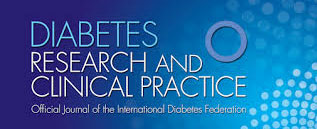Decreasing incidence of pharmacologically treated Type 2 diabetes in Hungary from 2001 to 2016: A nationwide cohort study
György Jermendy, Zoltán Kiss, György Rokszin, Zsolt Abonyi-Tóth, István Wittmann, Péter Kempler (Diabetes Research and Clinical Practice 155 (2019) 107788)
Abstract
Aims: Incidence and prevalence of Type 2 diabetes mellitus (T2DM) vary in different regions. Long-term nationwide epidemiological data are useful to assess trends over time. The aim of the study was to analyse the epidemiological changes of pharmacologically treated T2DM among people aged over 18 years in Hungary between 2001 and 2016.
Methods: Annual incidence, prevalence and all-cause mortality rate of pharmacologically treated T2DM patients were evaluated from 2001 to 2016 using the central database of the National Institute of Health Insurance Fund Management. Data were adjusted to age using the 2013 European Standard Population.
Results: Incident rate of pharmacologically treated T2DM decreased from 931.6 cases/100,000 person-years to 350.7 cases/100,000 person-years resulting in a -62.4% change (annual average change: -6.46% [95% CI: -7.64%; -5.67%]) between 2001 and 2016. The prevalence rate continuously increased from 4949.9 cases/100,000 persons in 2001 to the highest rate (8135.0 cases/100,000 persons) in 2011, which plateaued during the next 3 years and slightly decreased thereafter. Standardized all-cause mortality rate in people with T2DM decreased between 2001 and 2016 by 11.9% (annual average change: -0.84% [95% CI: -1.22%; -0.39%]). Conclusions: Despite a clearly decreasing incidence of pharmacologically treated T2DM in patients aged over 18 years, the prevalence rate increased from 2001 to 2011 followed by a 3-year-long plateau and a slight decrease thereafter. These long-term trends with the reduced mortality rate may indicate favourable effects of health promotional activities for preventing and treating T2DM.
